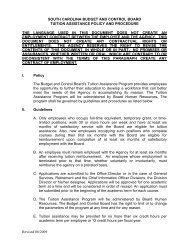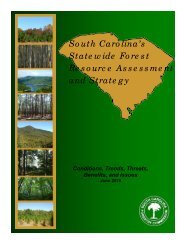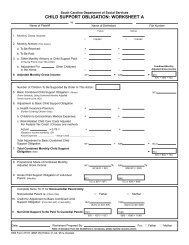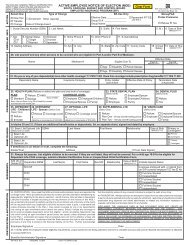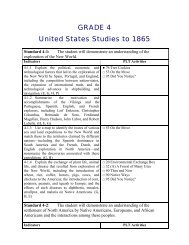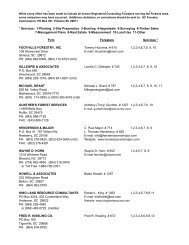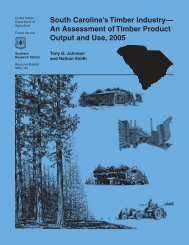2011-12 BMP Monitoring Report
2011-12 BMP Monitoring Report
2011-12 BMP Monitoring Report
Create successful ePaper yourself
Turn your PDF publications into a flip-book with our unique Google optimized e-Paper software.
EXECUTIVE SUMMARY<br />
This is the ninth study conducted by the South Carolina Forestry Commission to<br />
determine compliance with South Carolina Best Management Practices for Forestry<br />
(<strong>BMP</strong>s) during silvicultural activities. Forest operations were evaluated on 151<br />
randomly located sites during <strong>2011</strong>-20<strong>12</strong>.<br />
Overall <strong>BMP</strong> compliance on harvesting operations was 93.4%. Compliance indicates<br />
that the proper use of applicable <strong>BMP</strong>s was sufficient to protect water quality on<br />
those sites. <strong>BMP</strong> compliance for non-harvesting operations was 87.5%. This<br />
includes mechanical and chemical site preparation, pesticide and fertilizer<br />
application, prescribed burning, reforestation, and minor drainage. The overall<br />
implementation rate of individual <strong>BMP</strong> practices was 92.1%, compared to the<br />
regional average of 92% among southeastern states.<br />
This study highlights numerous strengths in <strong>BMP</strong> compliance:<br />
<br />
<br />
<br />
<br />
High overall compliance with <strong>BMP</strong>s to protect water quality during forestry<br />
operations.<br />
Improved landowner awareness of <strong>BMP</strong>s, and increased use of written<br />
contracts that require <strong>BMP</strong> compliance.<br />
Excellent compliance with <strong>BMP</strong>s related to Road Systems which often have<br />
a high potential for water quality impacts.<br />
Streamside Management Zones are frequently wider than the minimum<br />
recommendations on perennial and intermittent streams.<br />
Opportunities for improvement include:<br />
<br />
<br />
<br />
Increased attention is needed on firebreak lines, especially on steep slopes<br />
and near water bodies.<br />
Stream crossings and streamside management zones present the greatest<br />
opportunities for improving compliance.<br />
The most important individual practices for improvement are:<br />
Retain appropriate overstory trees within Streamside Management<br />
Zones,<br />
Compliance and Implementation <strong>Monitoring</strong> <strong>2011</strong>-20<strong>12</strong> Page 3





